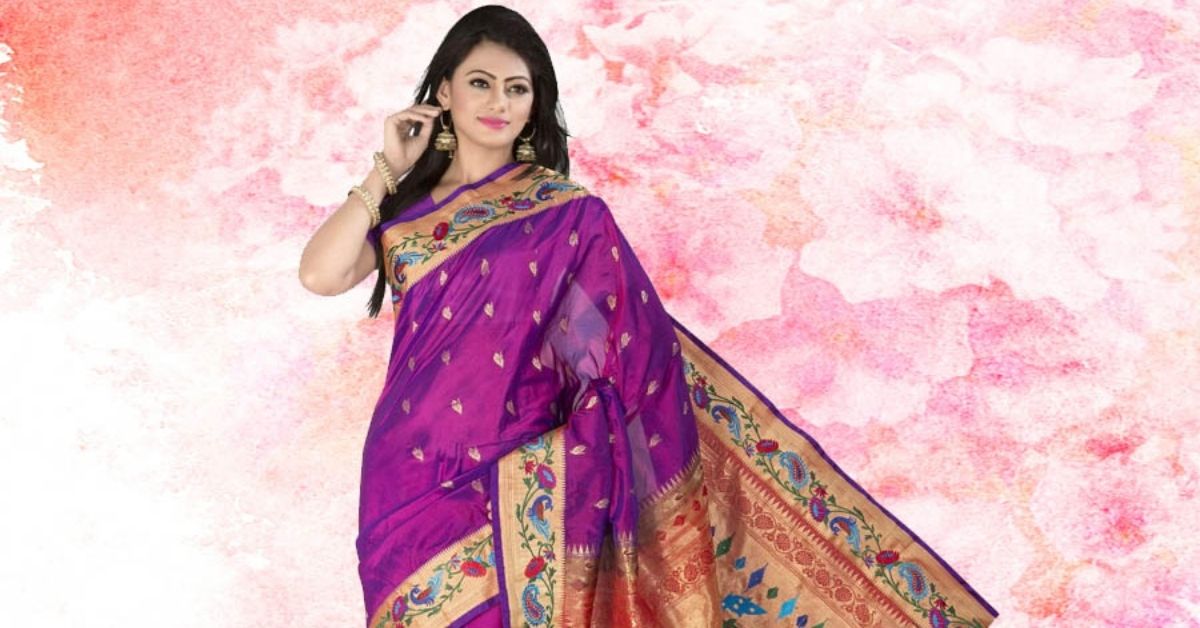
Every culture that thrives in India adds to the glorious diversity that the country has always been proud of. The people of Maharashtra have their traditions that are a reflection of their heritage and a result of the climatic, social, and economic conditions that have prevailed in their land in the long run. The same can be said about the traditional Maharashtrian Dresses.
The people of a region adopt a particular style of drapery or clothing as well as ornaments, which are passed on from generation to generation. Such changes and development in traditional clothing are brought about by geographic, social, political as well as foreign influence. Although traditional clothing distinguishes one ethnicity from another, it also emphasizes the unifying solidarity that exists among the people of a particular culture.
Maharashtrian clothing not only pleases the aesthetic sense but also, more importantly, portrays the rich heritage of the state, be it in terms of caste, profession, or geographic factors.
The Traditional Maharashtrian Dresses of Woman:
1. Nauvari Saree:

The Maharashtrian women wears the saree named ‘Nauvari’ or the Kashta saree. . It means ‘nine yards’, signifying the length of the fabric.
The unique pattern of draping is similar to that of the ‘dhoti’ that men wear. This allows ease of movement. It refers to the way it is tucked at the back after being draped around the waist and legs.
2. Himroo and the Mashru:
The fabrics of the Himroo and the Mashru are luxurious legacies. Woven with silver and gold threads, these fabrics blend both cotton and silk in a special handloom to produce the distinct and comforting finish of the texture. The process of weaving Himroo is more intricate and requires exclusive skill to master the finery of texture.
3. Paithani saree:

The Paithani sarees, which originated in Aurangabad in the 17th century CE, with their intricate gold-threaded zari embroidery and rich colors, are exquisite for occasions.
The pure silk is dyed in traditional colors, and contains pretty motifs and symbols, especially along the pallav.
4. Narayan Peth saree:
From the district of Solapur, the Narayan Peth sarees are famous for their broad and vibrant borders. They are usually strewn around with little motifs called rudrakshas, that strikingly contrast with the rest of the fabric.
The zari along the border or pallav of the saree is designed with threads of pure gold. The immaculate motifs of the Narayan Peth saree are usually of flowers and animals.
5. Karvat Kati Saree:

The Karvat Kati Saree originated in the Vidarbha region of Maharashtra, in the 18th century CE. The name ‘karvati kati’ literally translates to “saw-edged”, referring to the designs at the ends of the fabric that resemble the teeth of a saw.
This saree is usually worn during rituals and ceremonies. Chandrapur and Gadchiroli are the main centres of reeling activities while the weaving takes place at Bhandara and Nagpur districts.
6. Ganga-Jamuna saree:
The traditional Ganga-Jamuna sarees of Maharashtra from the Solapur District and have vivid colors on both the sides of the warp. The Nagpur saree, made of Tussar silk, is unique for its designs of checks and stripes across the body and its ornamented borders.
7. Choli:
The women wear sarees with a blouse called the ‘choli’. It is a top, with hooks or buttons to allow ease of donning them. During religious practices or holy ceremonies, the women drape the pallav of their saree over their heads as a mark of gratitude and respect towards God and the elders. They are short and half-sleeved and end near after chest area. In Maharashtra, most of the time sarees are green and red and choli is of matching colors to enhance the beauty of overall attire.
8. Footwear:
By tradition, women here prefer to walk barefoot. But on special occasions, they wear sandals and chappals which are handmade and very popular for their durability and simple looks. Men wear sandals on special occasions and it is a part of their culture.
The Maharashtrian artisans designs Kolhapuri chappals. Kolhapuri chappal originated in the Kolhapur District of Maharashtra and are worldly known for its strength and endurance. Maharashtrians seem to have the same style of attire for everything they do – whether it is resting or attending a wedding or traveling.
9. Chura:

Maharashtrian Chura consists of glass bangles of green color. Women wear these in odd numbers with Patlya or solid gold bangles. These Bangles bring prosperity and good luck is what people in Maharshtra believes.
10. Nath:
In Maharashtra, women wear jewelry on the nose called Nath. It is like loops of gold or other expensive metals earrings. During the traditional events like wedding or religious function, the women wears a nath. You will be surprised to know the weight of the nath, its is 22-carrat gold and has motifs.
11. Thushi:

Thushi is a traditional Maharashtrian necklace coming in elegant designs like choker Thushi, common Thushi, Vajratik Thushi. Pulti Haar is also another popular necklace type in Maharashtra. Haar is the most popular jewelry for occasions and festivals and they come in different shapes and designs.
12. Armlet and Bugadi:
In Maharashtra, Bajubandh or vaki are popular designs. The Maharastrian women wear Bugadi a popular jewelry in the helix part of the ear. These are the pearl beads which look quite attractive.
13. Mangalsutra:

Married women wear a necklace called Mangal Sutra which itself means unity of souls and it is a symbol of love and dedication towards their husbands. The traditional sacred thread is popular not just in Maharashtra but all across India. The black and gold beads makes it look attractive and signifies marital status.
14. Jodvi:
A married women wears Jodvi means toe ring . The newlywed brides usually, receive it from their mothers-in-law. It is worn in the second toe of both feet. Unmarried women wear it in their third toe.
Traditional Maharashtrian Dresses For Men:
1. Dhoti:

Dhoti is a single piece of cloth. It is tucked around the waist and covers the entire leg till ankles. You can pair a white and cream Dhoti with a nice pair of shit. It is super comfortable. Old people wear it in different styles in different cities.
2. Pehta:
Pehta is a cotton headcover or “Topi”. In other words, it is a Pagris basically to protect the head from direct sunlight. The men of the house wear it during special occasions like marriage and ceremonies and looks very elegant with proper dress.
3. Kurta:

Kurtas look amazing when paired over dhotis. These are cotton shirts which basically absorb heat and keep you cool during summers. These are generally loose and white in color. Along with dhotis, it is a classic combination to wear.
4. Bandi:
It is a waistcoat which is usually a sleeveless jacket and men wear it over shirts or kurtas. It is a formal dress and is people carry it on special occasions like marriage functions and festivals. These are quite warm therefore, not preferabble for summer.
5. Waistcoat:

The Maharashtrian men occasionally wear waistcoats called Bandi. Bandi is a sleeveless jacket or coat. Bandi made the Maharashtrian attire look more formal and proper. Bandis are more pragmatic keeping in mind the climate of Maharashtra which did not allow men to wear normal coats or overcoats due to the excessive warmth.
6. Kolhapuri chappals:
If you are looking for an open-toed sandals in a t-strap shape, the Kolhapuri chappals are best. The Maharashtrian artisans design these chappals using the leather. Kolhapuri chappal originated in the Kolhapur District of Maharashtra and are popular for its strength and endurance.
Maharashtrians seem to have the same style of attire for everything they do – whether it is resting or attending a wedding or traveling. The only thing that differs is the material. Silk is quite expensive in comparison to cotton therefore, people cotton attires for all occasions like weddings, festivals, and other such events.
7. Pyjama:

Pyjama or Lenga or Vijar is held together at the waist with a string knot tightly. Our view on the traditional Maharashtrian Dresses.
Summing up:
Do you know the best part about the Maharashtrian outfits is that these are so poppy in color and high
If you like to wear traditional Maharashtrian dresses or have experience of wearing these then, please let us know down in the comments and share this article.
Recommended Readings:
Also read: The Top 21 Traditional Rajasthani Dresses With A Blend of Colors and Culture
What's Your Reaction?
Priyanka is a graduate of Journalism and Mass communication. She loves to write and create content that revolves around fashion and beauty. With years of experience in content writing, she has good knowledge and ideas related to fashion, beauty, and travel content.



